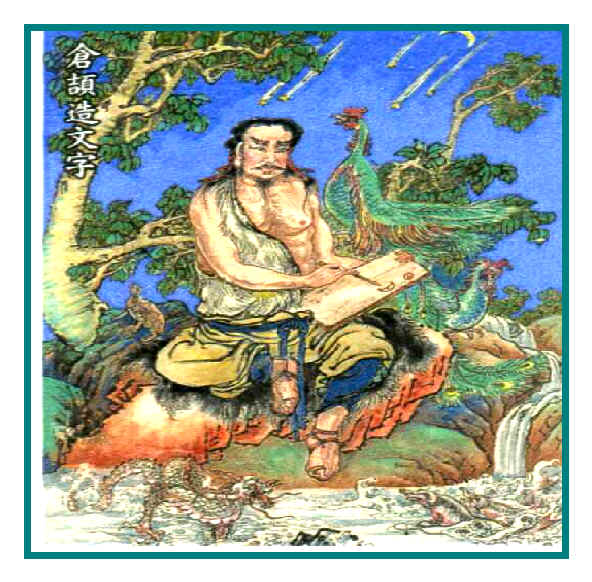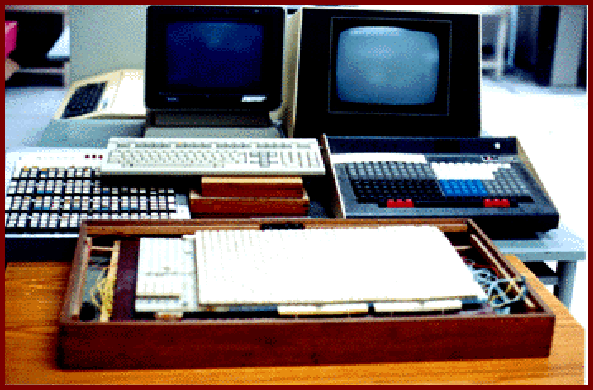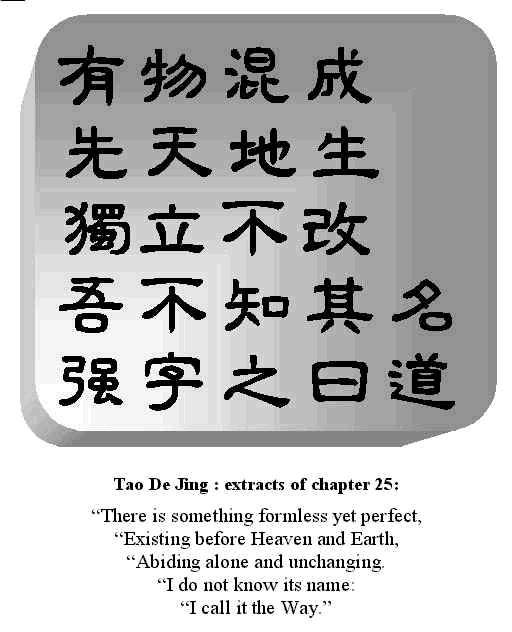HENRY CHU
AND THE STRUGGLE
TO SAVE
CHINESE CULTURE
4700 years ago, according to the legend, the savior ![]() (Càng Jiå) created on bones and
tortoise shells the first pictograms that evolved into the characters which
carry, till nowadays, the essence of Chinese Culture.
(Càng Jiå) created on bones and
tortoise shells the first pictograms that evolved into the characters which
carry, till nowadays, the essence of Chinese Culture.

The legendary savior: Cang Jie, 2700 BC.
Twenty-five years ago it appeared that all the information and data had to be processed by computers. It became extremely important to find a system that could input Chinese characters for use in Word Processors, Databases, Spreadsheets, etc., as it with alphabetic languages which allow indexing and sorting of words.
Without such a capability to input and electronically process Chinese characters, individuals and government institutions, civil and military administrations, universities, schools, libraries, museums, business entities, etc, would not be able to manage information (encrypt, index, sort, and search, etc.) in the fast, efficient, and economical way that a computer processes alphabetical languages.
It is easy to conceive how such a deficiency could impede the progress of a modern nation.
At that time then, well aware of the market potential, several multinational companies invested millions of dollars to find a practical Chinese computer system.
Because of the nature of Chinese characters, the task was not easy. One of the main difficulties lies in the physical constraints derived from the limited possibilities offered by the personal computer keyboard. The keyboard is well conceived to serve the needs of languages with a limited alphabet. But it is ill equipped to reproduce a language that includes 60,000 different ideographs!

The very educational picture above shows the huge keyboards used before Chu BangFu invention of Chang Jie. On top of them is the usual keyboard.
In Taiwan, as well as in the mainland China, computer systems handling Chinese had been created but were extremely impractical. They required huge keyboards and were difficult to manipulate. The input method was so complex that any entry needed first to be checked out in cumbersome logs of files, going through two or three pages to find the codes defining a single character. Worse yet, the output for each character was a "graphic file" --not text -- which could not be processed, sorted, or searched as computers do with text data.
Several of the companies that had researched the possibility of a "Chinese computer" declared that Chinese character input was impossible with the common keyboard. This occurrence put in jeopardy the future of Chinese as a language able to survive the computer age.
Was then the Chinese language on the brink of extinction?
This language of beautiful pictograms and ingenious ideograms - which had resisted many tribulations through 5000 years of history - was it going to become obsolete and discarded just because it was not computer compatible? Without doubt, this would have been its inevitable fate, if a practical system of computer input had not been invented!

Imagine the incredible loss for humanity as a whole if Chinese, the only remaining graphic language (the Egyptian Hieroglyphs lasted "only" 3600 years...), ceased to be a living language: all the metaphysical and other human sciences of the ancient books of China, the Dao De Jing of Lao-Tzu, the works of Chuang-Tzu, the Analects of Confucius, to recall only the most familiar, all such treasures engraved in these many thousands of pictograms and ideograms would vanish like the last dinosaurs of linguistic evolution.
This irreparable cultural loss has been avoided thanks to the invention, in 1980 by Chu Bang-fu, of a Chinese computing system comprising the Chang-jie input method, that allowed inputting of Chinese characters with a standard Roman-alphabet computer keyboard.
The system was developed in collaboration with Chu’s long-time friend Stanley Shih, now President of Acer Corporation. This original machine was named the "Dragon System" computer. Since that invention, the main obstacles to Chinese computing were overcome and nobody today is talking of dumping Chinese characters.
We conclude that the invention of the Cang-Jie computer system was an important factor in saving Chinese characters from technical obsolescence.
Click here to see how the Cang Jie System was not designed only as an input method but to propose a global system that can take advantage of all the possibilities a computer can give to a language